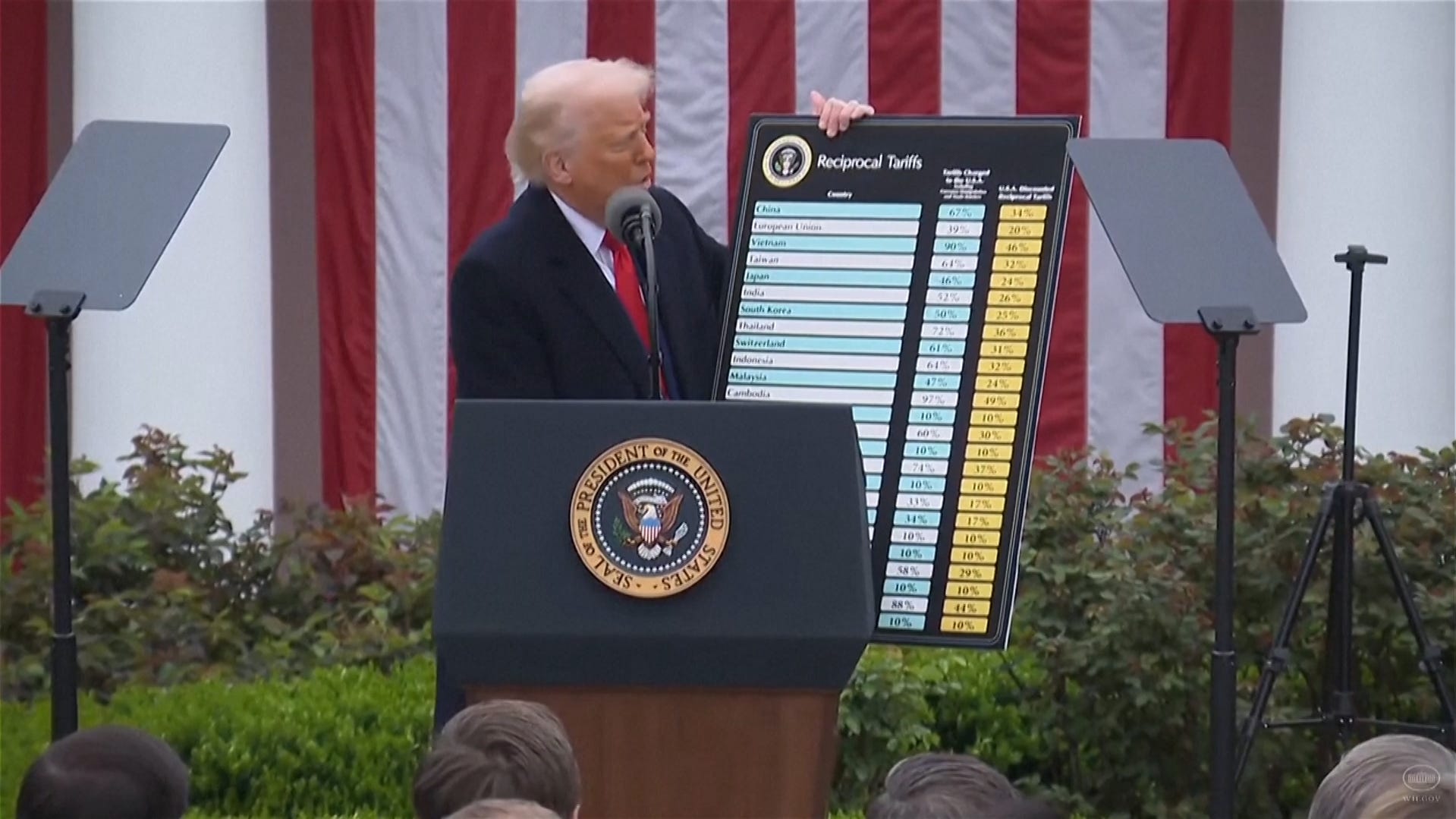Trade deficits explained: Understanding the imbalance in global trade

Are you wondering what trade deficits are and what all the hoopla is about regarding President Donald Trump's trade war? Here are some terms and facts to help you understand.
A trade imbalance is caused when you export or import more or less than your trading partner. For example, in 2024, the United States' total goods trade with China was an estimated $582.4 billion. Broken down, the exports from the U.S. to China were $143.5 billion compared to the $438.9 billion exported from China to the U.S. The difference results in a trade imbalance with a trade deficit for the U.S. and a trade surplus for China.
On a larger scale of comparison, the U.S. holds the largest trade deficit in the world, hitting a record $1.2 trillion dollars in 2024 because of four large deficits in particular ‒ with China, Mexico, Vietnam and Ireland.
The countries that top the list in trade deficits, importing more than they are exporting, are the U.S., India, United Kingdom, Turkey, France, Philippines, Japan and Spain.
According to Forbes, "There appears to be little Trump, Biden or any president can do about trade deficits, despite vowing to bring back manufacturing to the United States, which remains the world’s third-largest manufacturer."
While trade surpluses are no guarantee of economic health, they are often viewed as beneficial, as opposed to a trade deficit, which can raise concerns about economic health and potential imbalances.
In 2024, China hit the highest recorded global surplus of $992.16 billion. Other countries topping the trade surplus list are Germany, Ireland, Singapore, Saudi Arabia, Switzerland, Russia and Brazil.
Launching a historic global trade war, Trump announced at least 10% tariffs for "all" countries, with much higher rates for some countries or trading blocs last week. China was among the hardest hit with a 104% tariff that went into effect at 12:01 am Wednesday. China then retaliated saying it would impose 84% levies on U.S. goods. And the European Commission, which represents the European Union, greenlit a set of tariffs to start April 15, saying U.S. tariffs were "unjustified and damaging, causing economic harm to both sides, as well as the global economy.”
“We will charge them approximately half of what they are and have been charging us, so the tariffs will be not a full reciprocal,” Trump previously said. “I could have done that, I guess, but it would have been tough for a lot of countries, and we didn’t want to do that.”
At the time, Trump cited examples such as instead of matching the European Union’s 39% tariff on U.S. goods, the new duty on the EU was to be 20% instead. China, which had already been slapped with a 20% tariff for its role in the fentanyl trade, was to be levied an additional 34% ‒ half of the 67% tariff it imposes on the U.S. ‒ bringing its new rate at that time to 54%.
Here's what to know about tariffs.
What are tariffs?
A tariff is a tax on imported goods, imposed by the government, and is usually a percentage of the product's value.
The importing company pays the tariff to the government imposing the levy. So, if an item is valued at $100 and subject to a 25% tariff, the importer would pay $25 in tariffs.
As with any other tax, it increases the price of the product, which is usually then passed on to the customer.
Tariffs are a form of trade regulation that governments use to protect domestic industries, such as agriculture and renewable energy or support local industries. They are also used to negotiate trade agreements and compete with other countries or retaliate against them when needed.